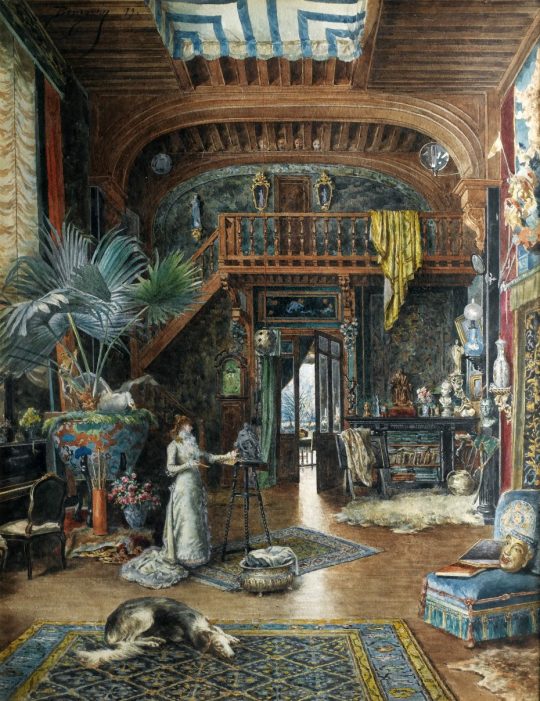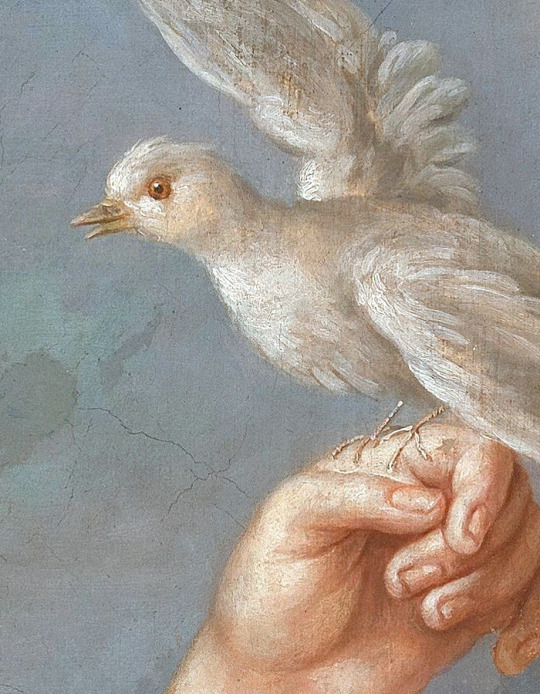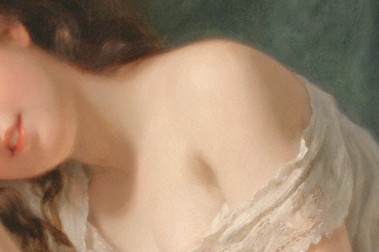#19th Century European History
Explore tagged Tumblr posts
Text
Lay Down Your Arms by Bertha von Suttner: A Timeless Plea for Peace and Disarmament #TBRChallenge #bookchatter #BookReview
Lay Down Your Arms by Bertha von Suttner: A Groundbreaking Plea for Peace Introduction: A Pioneering Voice in the Fight for Peace Lay Down Your Arms (original title: Die Waffen nieder!), written by Austrian novelist and peace activist Bertha von Suttner in 1889, is more than just a novel. It is a manifesto, a passionate plea for peace, and a groundbreaking work of anti-war literature. This…
#19th Century European History#Anti-War Literature#Bertha von Suttner#disarmament#Historical Fiction#Lay Down Your Arms#Nobel Peace Prize#Pacifism#peace activism#war ethics#women in peace movements#World War I literature
0 notes
Text

Young Woman With Sword by Jules-Élie Delaunay (1828-1891)
#art#traditional art#painting#traditional#art history#history#Jules-Élie Delaunay#Jules Elie Delaunay#french art#european art#1800s art#19th century#19th century art#oil painting#1800s#woman#portait
15K notes
·
View notes
Text

Woman in a boat, 1886
Albert Edelfelt
581 notes
·
View notes
Text

Josef Schuster (Austrian, 1812-1890) • Still life of Alpine flowers in a landscape • Unknown date
#still life#art#painting#fine art#art history#oil painting#josef schuster#austrian artist#19th century european art#still life in a landscape#art of the still life blog#artwork#art blogs on tumblr#artist
481 notes
·
View notes
Text










From anthropological album "The Russians" (1867)
#Россия#Russia#vintage#photography#русские#russians#slavs#people#anthropology#russian#photo#Eastern Europe#history#slavic#portraits#Europe#traditional#folk#european#photos#vintage photography#1860s#1867#19th century
315 notes
·
View notes
Text

Marie-Desiree Bourgoin (French, 1839–1912) • Sarah Bernhardt Sculpting in Her Studio • 1879 • Watercolor and gouache over graphite • Metropolitan Museum of Art
#art#painting#fine art#art history#marie desiree bourgoin#french artist#sarah bernhardt#watercolor over graphite#paintings of art studios#19th century european art#paintings of interiors#women in paintings#the painted room art blog#art blogs on tumblr#dogs in artworks
436 notes
·
View notes
Text

Young Woman with Bird (detail), painted by a follower of Élisabeth Vigée Le Brun (1755-1842), unknown date. Oil on canvas.
#elizabeth vigee le brun#18th century#19th century#art#history#french art#european art#art detail#1700s#1800s
1K notes
·
View notes
Text


Anna Bilińska-Bohdanowicz (Polish, 1854–1893) • Self-Portrait with Apron and Brushes • 1887
#art#art history#self portrait#painting#oil painting#woman artist#anna bilińska-bohdanowicz#polish artist#portraitist#late 19th century european art#artist as subject#the canvas mirror art blog#art blogs on tumblr#art lovers on tumblr
186 notes
·
View notes
Text
For a belated #WorldAlbatrossDay:



1. Pl.6, Oceanic birds of South America, V.1, New York, 1936
2. Pl.40, Wild life of the world, London, 1916
3. Pl.XXVI, Le monde de la mer, Paris, 1866
Via BHL
#animals in art#animal holiday#european art#20th century art#birds in art#19th century art#bird#birds#American art#French art#British art#historial sciart#sciart#scientific illustration#natural history art#seabirds#albatross#albatrosses#book plate#lithograph#World Albatross Day#ocean life#marine biology#ornithology
203 notes
·
View notes
Text

Young Woman Washing herself (1896) — Edvard Munch
#art#art history#painting#traditional art#edvard munch#young woman washing herself#19th century art#oil on canvas#norwegian artist#norwegian art#european art#1900s#melancholia
104 notes
·
View notes
Text


Fritz Zuber-Bühler
Swiss, 1822-1896
Reclining beauty (details)
#art#painting#art history#art detail#classical art#fritz zuber buhler#women in art#19th century art#academic art#academism#soft aesthetic#pink aesthetic#art aesthetic#art academia#painting detail#european art#coquette#coquette aesthetic#light academia
533 notes
·
View notes
Text



Did you know that a Japanese samurai is buried in a village in Northern Catalonia? 🏯 Here's how he ended up in the other side of the world.
Nomura Kosaburo was born in a samurai family in 19th-century Okayama (Japan). His father was a retainer of the Bizen province, serving Lord Ikeda's family. When he was 12 years old, his father died and he inherited his stipends, becoming a samurai himself.
In 1869, he started attending the Army Officers' School “heigaku-ryō” in Osaka (Japan). The school selected 10 of its students to go study in different schools in France. The young Kosaburo was one of the chosen ones, and was sent to the Lycée Louis le Grand in Paris (France). He studied mathematics and received excellent grades, and was scheduled to join a staff officer school, but his plans were cut short when he contracted Tuberculosis.
In 1878, he was advised to go to Southern France, because its dry air was recommended for the treatment of illnesses such as Tuberculosis. He chose the village of Els Banys i Palaldà (Northern Catalonia), a spa town known for its termal water since Ancient Roman times and which had recently built a new military hospital.
Nomura did not survive the illness, he died in 1876. He was buried in the local cemetery, in the tomb you can see in the photos above. The Japanese text means "Tomb of Nomura Kosaburo, Japanese Military Cadet". Below, a text in French says "Here lies Kosaburo Nomura, Japanese military student. Died in Amélie-les-Bains on June 26th 1876 at the age of 21. Perpetual concession." (Amélie-les-Bains is the French name for the village).
His tomb was almost forgotten for 130 years, but now the association Les Amis de Kosaburo - Kosaburo no tomodachi ("Friends of Kosaburo") study his history and preserve his memory in Els Banys i Palaldà and Okayama.
Photos from Vallespir Canigó. Information from Els Banys i Paladà City Council (Mairie Amélie-les-Bains-Palalda-Montalba) and Association Les Amis de Kosaburo.
#història#els banys i palaldà#catalunya nord#japan#japó#other countries#samurai#japanese history#19th century#history#european history#france#french history#travel#europe#asia#okayama#pays catalan#historical
66 notes
·
View notes
Text

The Forerunner (1894) by Eugène Trigoulet
#fashion#Eugène Trigoulet#Eugene Trigoulet#1894#1800s#traditional#traditional art#painting#1800s art#french#french art#art history#oil painting#oil on canvas#19th century#19th century art#european art
98 notes
·
View notes
Text

The Black Brunswicker
Artist: John Everett Millais (British, 1829–1896)
Date: 1860
Genre: Genre Art
Medium: OIl on canvas
Collection: Lady Lever Art Gallery, Merseyside, England, United Kingdom
Description
The theme of ‘The Black Brunswickers’ is an imaginative incident depicting a historical moment. The Black Brunswickers were a special troop raised by Frederick William, Duke of Brunswick (1771 - 1815) in 1809. The regiment consisted of the best German gentlemen and was known as the ‘Death or Glory’, a name which derived from their distinctive death’s head hat badge and their apparent devotion to duty. The troops suffered severe losses at the battle of Quatre Bras at Waterloo in 1815. In a letter to his wife Effie, Millais described his idea and his enthusiasm for the subject:
"My subject appears to me, too, most fortunate, and Russell (the war correspondent of The Times) thinks it first-rate… I have it all in my mind’s eye and feel confident that it will be a prodigious success. The costume and incident are so powerful that I am astonished it has never been touched upon before. Russell was quite struck with it, and he is the best man for knowing the public taste. Nothing could be kinder than his interest, and he is to set about getting all the information that is required."
Millais spent three months painting ‘The Black Brunswickers’. Studies for the work exist both in the Lady Lever Art Gallery’s archives as well as in Tate Britain. Millais used Charles Dickens’s daughter, Kate, as the model for the girl and a private in the Life Guards for the soldier. Each had to model separately using a lay figure to lean against.
Millais wished to be historically accurate in making the girl’s dress look quite antique (it is actually a compromise between the fashions of 1809 and 1815 when waists were still kept high). The intensity of emotions is well conveyed in the close encounter of the couple, the girl’s body attempting to obstruct the soldier from his task and prevent his destiny.
The dark and enclosed space enhances the tragedy of the scene, and the work appeals both to viewers’ patriotism and sentimentality. The only distraction is perhaps the brilliant shine of the girl’s dress. The dog at the soldier’s feet also draws attention to the humanity of the subject. On the wall of the room is an engraving of a painting by JL David (1748 - 1825), which depicts Napoleon crossing the Alps. It serves as a reminder of Waterloo while also alluding to current events in 1860, when Napoleon III entered a war in Northern Italy in an attempt to expel the Austrians.
#painting#couple#soldier#woman#genre art#oil on canvas#history#uniform#costume#interior#leaving#door#dog#love#historical moment#the black brunswickers#john everett millais#british painter#british culture#artwork#oil painting#european art#19th century painting
32 notes
·
View notes
Text

Albert Anker (Swiss, 1831-1910) • Still life: coffee and potatoes • 1897
#still life#art#painting#fine art#art history#albert anker#swiss artist#oil painting#19th century european art#art of the still life art blog#art blogs on tumblr#art lovers on tumblr
574 notes
·
View notes
Text

Sacrificial feast in the Sudnozero/Venehjärvi village,Kemskiy uyezd of Arkhangelsk governorate (1894)
Photo by Konrad Inha (1865-1930)
#Россия#Russia#vintage#photography#карелы#karjala#karjalaiset#karjalan#karelian#karelians#Архангельская губерния#Arkhangelsk governorate#Konrad Inha#finnish photographer#photographer#Europe#traditional#history#photo#european#folk#traditions#black and white#vintage photography#1890s#1894#19th century
191 notes
·
View notes